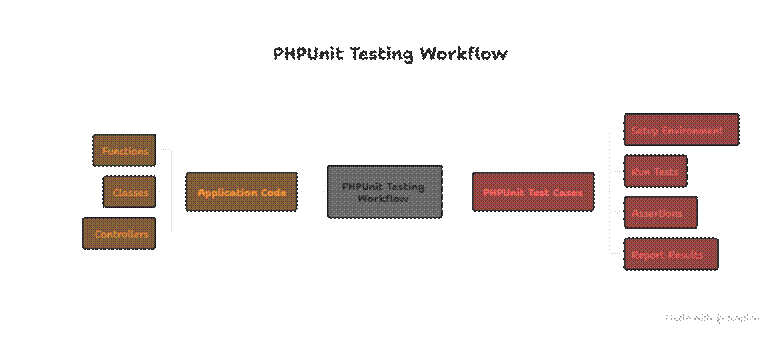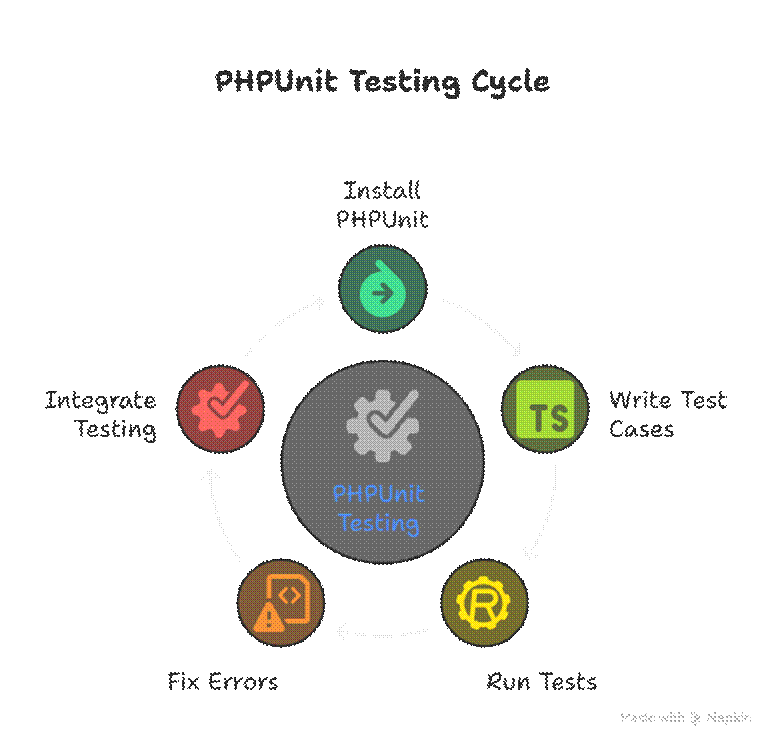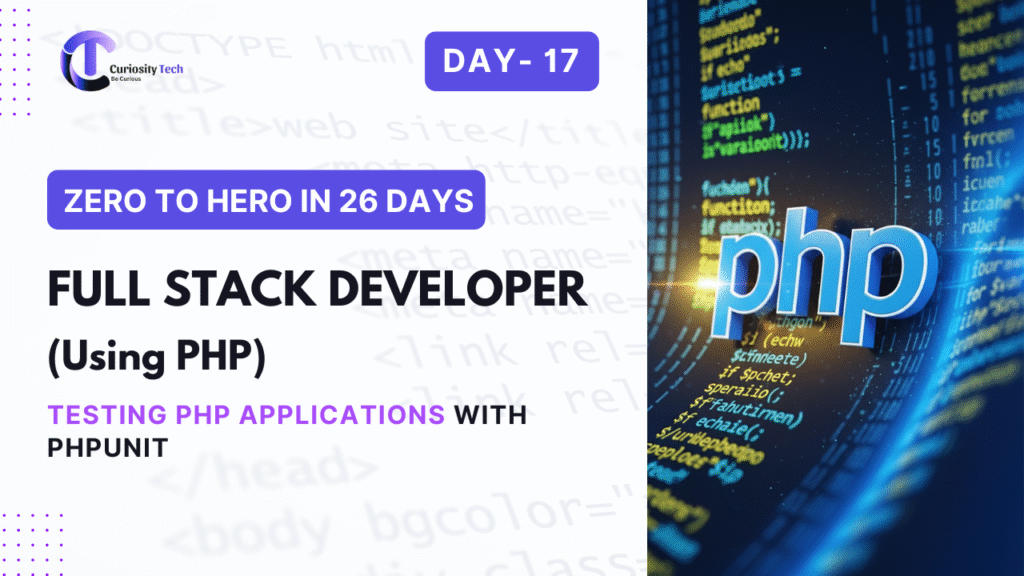Introduction
On Day 17, we explore unit testing in PHP using PHPUnit, a fundamental skill for Full Stack Developers. Testing ensures that your PHP applications are reliable, maintainable, and bug-free, which is essential for professional-grade software development.
At CuriosityTech.in, learners practice writing test cases, running automated tests, and integrating PHPUnit into their workflow to build robust and error-resistant applications.
1. What is PHP Unit?
PHPUnit is a testing framework for PHP, designed to write and execute unit tests. Unit tests verify that individual components of your code function correctly.
Key Features:
| Feature | Description |
| Assertions | Test if code returns expected results |
| Test Suites | Group multiple tests for a project |
| Fixtures | Set up environment or variables before tests |
| Mock Objects | Simulate objects or services for isolated testing |
| Automation | Run tests automatically to ensure reliability |
2. Installing PHPUnit
Step 1: Install via Composer
composer require –dev phpunit/phpunit
Step 2: Verify installation
vendor/bin/phpunit –version
3. Writing Your First Test
File: tests/ExampleTest.php
<?php
use PHPUnit\Framework\TestCase;
class ExampleTest extends TestCase
{
public function testAddition()
{
$result = 2 + 3;
$this->assertEquals(5, $result);
}
}
Explanation:
- TestCase is the base class for PHPUnit tests
- assertEquals(expected, actual) checks if values match
- Test methods must start with test
4. Testing a PHP Function
Function to Test: functions.php
<?php
function add($a, $b) {
return $a + $b;
}
Test File: tests/FunctionsTest.php
<?php
use PHPUnit\Framework\TestCase;
require ‘functions.php’;
class FunctionsTest extends TestCase
{
public function testAdd()
{
$this->assertEquals(10, add(4, 6));
$this->assertEquals(0, add(0, 0));
}
}
5. Testing Laravel Applications
Laravel integrates PHPUnit out-of-the-box.
Example – Testing a Controller Method:
<?php
namespace Tests\Feature;
use Tests\TestCase;
use Illuminate\Foundation\Testing\RefreshDatabase;
use App\Models\User;
class UserTest extends TestCase
{
use RefreshDatabase;
public function testUserCreation()
{
$user = User::factory()->create([
‘name’ => ‘Bhavesh Barange’,
’email’ => ‘bhavesh@curiositytech.in’
]);
$this->assertDatabaseHas(‘users’, [
’email’ => ‘bhavesh@curiositytech.in’
]);
}
}
Explanation:
- RefreshDatabase ensures a clean database state for each test
- assertDatabaseHas verifies data insertion
6. Running Tests
vendor/bin/phpunit
Output Example:
OK (3 tests, 3 assertions)
7. Hierarchical Diagram: PHPUnit Workflow

8. CuriosityTech.in Perspective
At CuriosityTech.in, learners implement automated testing for PHP and Laravel applications, ensuring their projects are robust, error-free, and production-ready. Testing is integrated into the development workflow, preparing students for professional software development practices.
Practical exercises include testing CRUD operations, authentication, and file uploads, reinforcing concepts from Days 6–16.
9. Infographic Concept: PHPUnit Testing Steps

Conclusion
Unit testing with PHPUnit is essential for reliable and maintainable PHP applications. Today’s lesson ensures developers can write, run, and automate tests, providing confidence in their applications and preparing them for deployment (Day 18) and secure, professional full-stack development.



